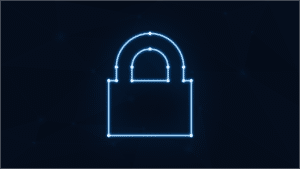
9 Most Terrifying Types of Malware
Modern-day hacking is not just systematic but also ruthless. Via malware – anything that has been designed to steal your data or hurt your computer systems – these hackers target businesses virtually.
The days of simply relying on your computer’s built-in antivirus software are over. Instead, businesses need the best endpoint security software to remain protected, but first, let us understand the nine most terrifying types of malware.
Virus
A Virus can attack your business’ files by infecting them, deleting them, or reformatting them. In many cases, to get things working again after you detect the Virus, you will need to quarantine or delete the affected files.
Worms
Like a Virus, Worms too can infect your files; however, the difference is that worms self-replicate and spread without any action needed from your end. Worms replicate themselves and exploit other software to do their job for them.
Trojans
Named after the Iliad’s famed Trojan Horse, the malware called ‘Trojans’ disguises itself as desirable software and tricks users into downloading it. This type of malware takes advantage of its victim’s lack of security knowledge. It usually arrives in the form of an email attachment. Trojans are challenging to defend against because they are easy to write and are triggered by humans opening them in error. Once downloaded, Trojans can open doors to give cybercriminals access to your system.
Hybrids
As the word suggests, ‘Hybrids’ are malware with different attributes. Hybrids – also known as ‘Combo Malware’ – are the lovechild of Trojans and Worms. As you can imagine, it can be tough to clean up after an attack by Hybrids.
Ransomware
The name says it all. A cybercriminal launches an attack that seeks to encrypt your files and data, blocking your access to them. To retrieve your files back, you need to pay the hacker a ransom. Most ransomware is a Trojan featuring an accidental trigger by opening an attachment or visiting an unsecured website. It is not easy to recover from this malware, highlighting the importance of constant file backing-up.
Fileless Malware
Where ‘traditional’ malware relies on files to spread and infect, this form of malware relies on memory or other file-less parts of your computer’s operating system. These are difficult to detect and stop.
Adware
You are on a website. There is a pop-up. You click it. It says “Installed.” That is ‘Adware.’ Adware is more annoying than it is dangerous. They slow computers down and make them vulnerable to attacks in the future.
Malvertising
Malvertising occurs when a cybercriminal pays for an advert on a genuine website. Then, when you click on the ad, either you are redirected to a malicious website or malware is installed on your device.
Spyware
Spyware is when you click on something you should not, such as an attachment, a pop-up or notification. When installed, spyware can monitor the websites you visit, everything you type and any other information on your device.


